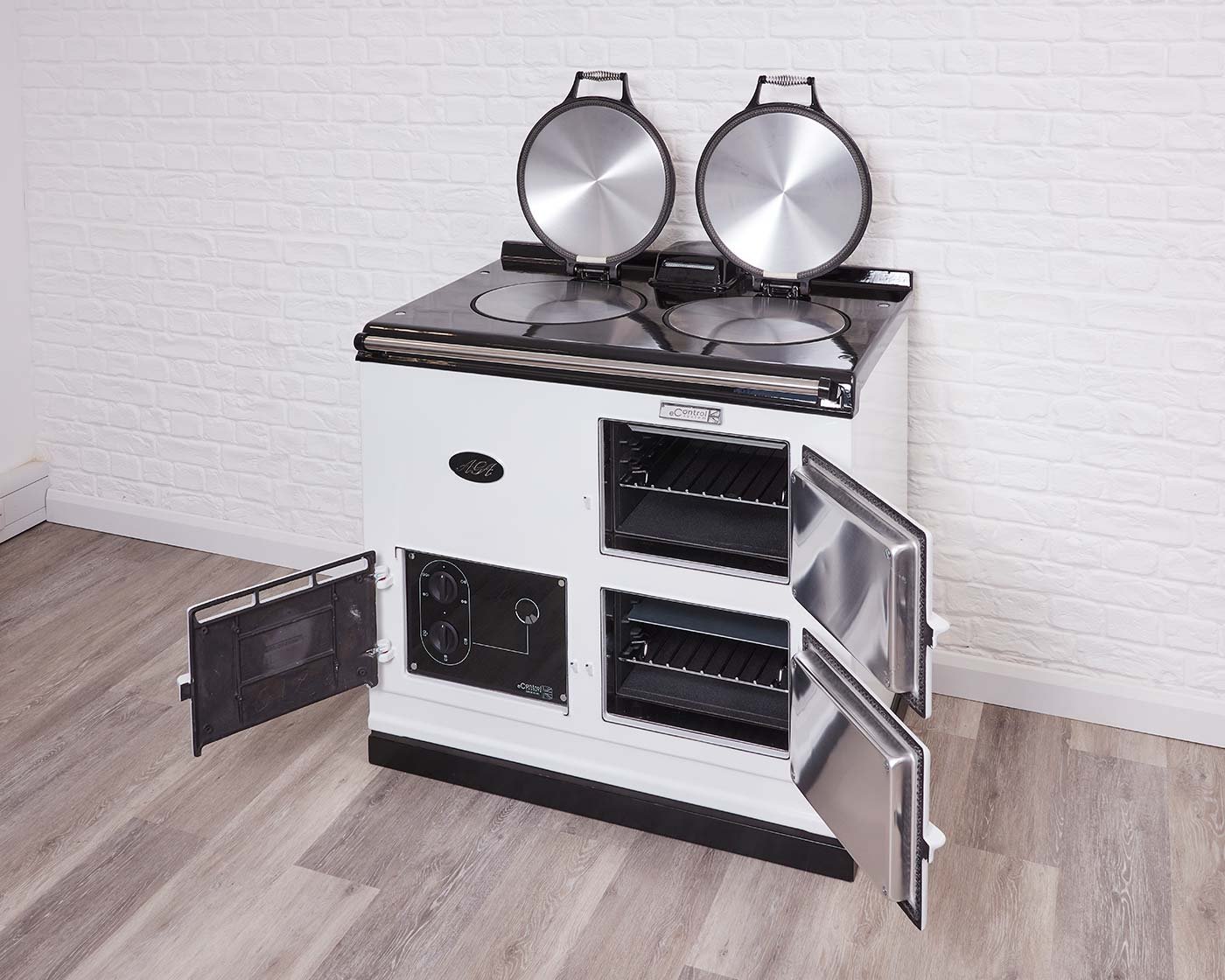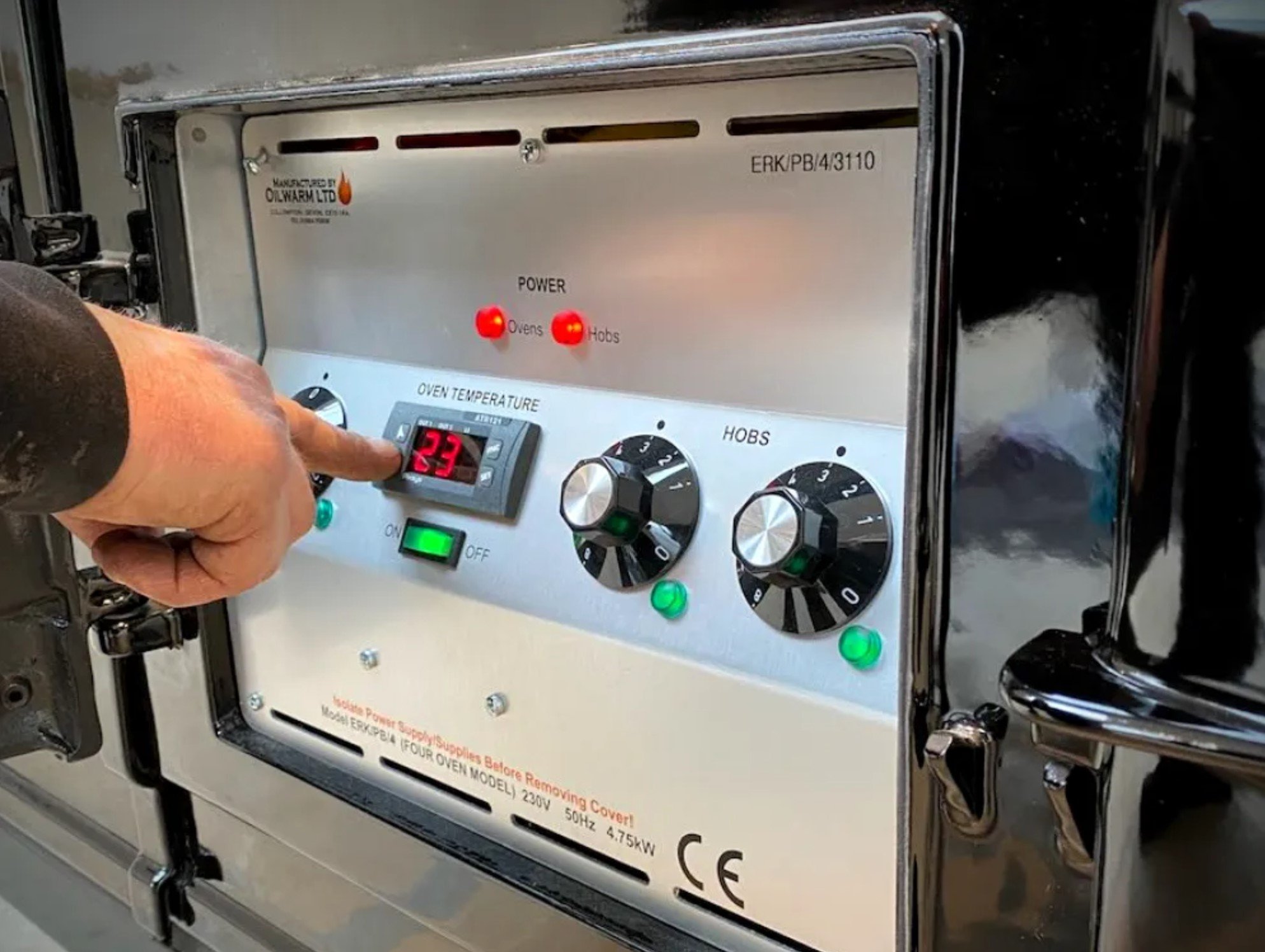Are AGAs Energy Efficient?
By Andy Mills of ARCS
A Comprehensive Comparison of Fuel Types
AGA range cookers have long been a cherished feature in kitchens, known for their iconic design and exceptional cooking performance. However, with rising energy costs and growing concerns about environmental impact, it's essential to assess the energy efficiency of different fuel types for AGAs.
In this blog, we will explore the cost and efficiency of running oil AGAs, gas AGAs, and two electricity-converted systems: the eControl System and the Electrikit System. By examining these options, you can make an informed decision that aligns with your budget and sustainability goals.
OIL AGAS: A TRADITIONAL CHOICE
Oil AGAs have been a popular choice for many years, providing reliable heat and cooking capabilities. However, they come with certain considerations in terms of efficiency and running costs. One advantage of oil AGAs is their ability to retain heat for longer periods, allowing for a consistent cooking temperature even after the AGA has been turned off. This can be advantageous for slow cooking and reducing energy consumption.
On the other hand, oil AGAs require regular servicing to maintain optimal performance and efficiency. The efficiency of oil AGAs can vary depending on factors such as insulation, usage patterns, and proper maintenance. It's important to note that oil prices can fluctuate, impacting the overall cost of running an oil AGA. Additionally, the environmental impact of burning oil should be taken into account when considering the sustainability of this fuel type.
GAS AGAS: BALANCING EFFICIENCY AND CONVENIENCE
Gas AGAs offer a convenient and efficient alternative to oil AGAs. They provide instant heat, allowing for quicker cooking times and greater control over temperature settings. Gas AGAs are often considered more environmentally friendly than oil AGAs due to lower carbon emissions. However, it's crucial to ensure proper ventilation and safety measures when using gas appliances.
When comparing running costs, gas AGAs generally have lower fuel expenses compared to oil AGAs. Gas prices tend to be more stable and predictable, making it easier to budget for energy costs. However, it's important to consider the initial installation costs and potential maintenance requirements when evaluating the overall cost-effectiveness of a gas AGA.
THE ECONTROL SYSTEM: UPGRADING TO ELECTRIC EFFICIENCY
The eControl System offers a retrofit conversion option for traditional AGAs, allowing them to be converted to electric and providing enhanced controllability and energy efficiency. This system utilises heating elements placed strategically between the roasting and simmering ovens, as well as integrated elements in the boiling and simmering plates.
With the eControl System, users can manually select temperatures for the roasting oven, allowing for precise cooking control. The heat then dissipates to the simmering oven, creating a temperature difference for different cooking needs. The eControl System also offers flexibility in the summer months when traditional AGAs may struggle to provide efficient heat.
One of the key advantages of the eControl System is its reduced running costs. By utilising electric power, users can benefit from lower energy expenses compared to oil or gas AGAs. Additionally, the eControl System is designed with eco-friendliness in mind, offering a more sustainable option for cooking.
📝RELATED CONTENT: ‘Converting our oil AGA to run on electricity - Client case study’
THE ELECTRIKIT SYSTEM: ANOTHER ELECTRIC CONVERSION SOLUTION
Similar to the eControl System, the Electrikit System provides an electric conversion solution for AGA range cookers. This system consists of heating elements placed within the AGA, offering controllability and energy efficiency. The Electrikit System allows for temperature adjustments in the roasting and simmering ovens, providing flexibility in cooking.
One advantage of the Electrikit System is its ease of installation. By converting an existing AGA to electric, users can enjoy the benefits of electric efficiency without the need for extensive renovations or purchasing a new cooker. Additionally, the Electrikit System boasts reduced running costs compared to traditional fuel-powered AGAs.
COMPARING THE COSTS
To determine the most cost-effective option, it's essential to consider the long-term expenses associated with each fuel type or conversion system. While oil and gas AGAs may have lower initial installation costs, they can be more expensive to run due to fuel expenses and potential maintenance requirements. On the other hand, electric conversion systems like the eControl System and the Electrikit System offer lower running costs, resulting in potential savings over time.
It's important to note that the precise costs will vary depending on factors such as energy prices, usage patterns, and the size of the AGA. Conducting a cost analysis based on your specific circumstances and energy rates can help determine the most economical choice for your needs.
ENVIRONMENTAL CONSIDERATIONS
In today's environmentally conscious world, the impact of our energy choices is a crucial factor to consider. Oil AGAs produce carbon emissions during combustion, contributing to climate change. Gas AGAs offer a greener alternative with lower carbon emissions. However, both oil and gas AGAs still rely on fossil fuels.
Electric conversion systems like the eControl System and the Electrikit System provide a more sustainable option. By utilising electric power, these systems reduce carbon emissions and offer a cleaner cooking solution. Additionally, advancements in renewable energy sources can further enhance the environmental benefits of electric AGAs.
MAKING THE DECISION
When deciding on the most suitable AGA fuel type or conversion system, it's essential to consider your priorities. If you value tradition and slow cooking, oil or gas AGAs may be the preferred choice. However, if controllability, energy efficiency, and sustainability are important to you, electric conversion systems like the eControl System and the Electrikit System offer compelling advantages.
To make an informed decision, consider factors such as initial installation costs, long-term running expenses, environmental impact, and your cooking preferences. As AGA specialists we can help advise you on the best solution for you/ You may also want to consider other customer reviews and testimonials which can also provide valuable insights into the performance and satisfaction levels of each option.
CONCLUSION
AGA range cookers are beloved for their timeless design and exceptional cooking capabilities. When evaluating their energy efficiency, it's crucial to examine the fuel types and conversion systems available. Oil and gas AGAs offer tradition and convenience, but electric conversion systems like the eControl System and the Electrikit System provide enhanced controllability, reduced running costs, and greater eco-friendliness.
By carefully considering your priorities and conducting a cost analysis, you can choose the AGA fuel type or conversion system that aligns with your budget, sustainability goals, and cooking preferences.
If you are looking at ways to maintain your AGA or Range Cooker or make it more efficient, please get in touch!







